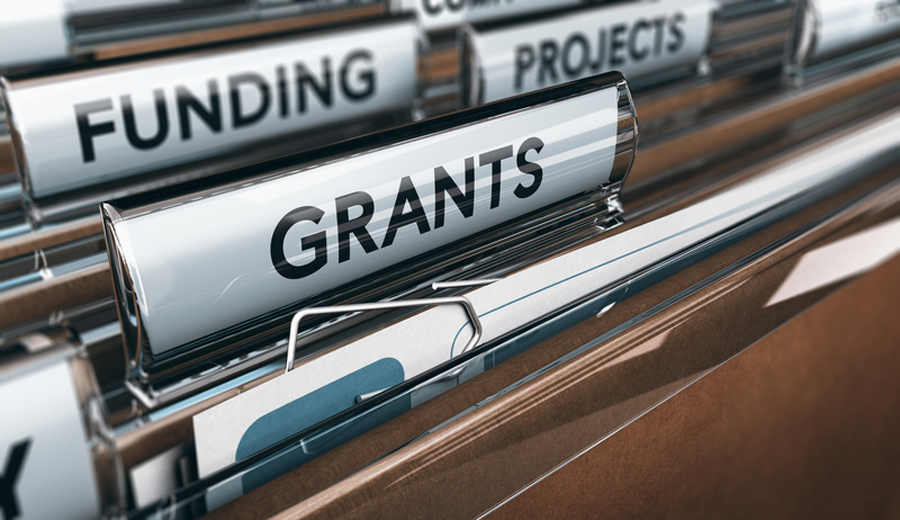Op-Ed: Puerto Rico’s recovery funds demand a private match

A federal grant is “a way the government funds ideas and projects to provide public services and stimulate the economy,” and it is one among many ways the US government reallocates resources to eligible recipients.
With the Biden administration, citizens and businesses in Puerto Rico expect that the massive investment in federal dollars allows full recovery and results in growth. But above all, such investment should authentically “trickle-down” to create jobs and economic prosperity.
For true recovery, the investments must address the inequities that are endemic to the island. According to a McKinsey & Co. publication the US must improve the collective well-being of communities promoting inclusive growth, in particular:
…leaders work to both stimulate the US economy and make it more inclusive, ensuring that the COVID-19 pandemic does not considerably increase material deprivation, lead to financial ruin or downward mobility, or result in permanent, detrimental changes to our economic structure. We believe that to achieve long-term, sustainable, and inclusive growth, public-, private-, and social-sector leaders must work together to embed equity in the development process.
In the Congressionally approved economic and disaster recovery plan for Puerto Rico,[1] the Government of Puerto Rico views the recovery effort as an opportunity to transform the Island by implementing cost-effective and forward-looking solutions, harness innovative thinking and best practices, and revitalize economic growth. Within the scope of the recovery, according to the CDBG-DR Action Plan,[2] it is in the public interest that recovery projects in the island “implement construction methods that emphasize quality, durability, energy efficiency, sustainability, and mold resistance.” Furthermore, “all rehabilitation, reconstruction, and new construction will be designed to incorporate principles of sustainability, including water and energy efficiency, resilience, and mitigation against the impact of future shocks and stressors.”
Nonetheless, both plans caution that it is expected that partners of the recovery process demonstrate use of its own resources as part of the recovery process. The plan states that “opportunities for private and philanthropic sector contributions will also be considered during program design to maximize local leverage.”
Therefore, it is not exclusively the federal government’s responsibility to invest in Puerto Rico’s much-needed infrastructure overhaul for the recovery to work. The island’s private sector must match with an investment what the US government is allocating. And it is not just putting some “in-kind” contributions; it must be cold hard cash. It is the right thing to do.
A “match” is the non-federal share of costs that the recipient or its partners are required in some grant programs to contribute fulfilling the purposes of the grant. The match requirement is mostly directed to provide continuity, sustain, and institutionalize a program after the federal funding has elapsed.
The Uniform Administrative Guidance under 2 CFR 200.306(b) establishes for all Federal awards, any shared costs or matching funds , including cash and third-party in-kind contributions, must be accepted as part of the non-federal entity‘s cost sharing or matching when such contributions meet all of the following criteria:
(1) Are verifiable from the non-federal entity‘s records;
(2) Are not included as contributions for any other federal award;
(3) Are necessary and reasonable for accomplishment of project or program objectives;
(4) Are allowable under subpart E of this part;
(5) Are not paid by the Federal Government under another federal award, except where the Federal statute authorizing a program specifically provides that Federal funds made available for such program can be applied to matching or cost sharing requirements of other Federal programs;
(6) Are provided for in the approved budget when required by the federal awarding agency; and
(7) Conform to other provisions of this part, as applicable.
Although many Commonwealth administrations, pundits, and politicians have insisted on more entities applying for competitive grant programs, it is easier said than done (and it is the item of another piece). Most governments and nonprofits DO NOT send proposal applications because of match requirements. Furthermore, many service programs end because recipients do not set aside funds or provide private funding for program stability.

For example, I know of some Head Start recipients who fold and close because of a lack of matching or institutional funds.
Under this hurricane and pandemic recovery, various federal funding programs and mechanisms allow the private sector to allocate a fair share of dollars into the mix. As part of the CDBG-DR recovery, private for-profit entities could partake in these grant programs if they could demonstrate, as a subrecipient, that they could provide assistance to low and moderate-income families in activities such as “providing credit, including, but not limited to, grants, loans, loan guarantees, and other forms of financial support, for the establishment, stabilization, and expansion of microenterprises,” “technical assistance, advice, and business support services to owners of microenterprises and persons developing microenterprises,” or “general support like peer support programs, counseling, child care, transportation, and other similar services, to owners of microenterprises.” (24 CFR 570.201(o))
The recovery also needs contributions from financial institutions receiving federal financial assistance, for which they need to step up and be accountable. For example, the New Markets Tax Credit Program of the US Department of Treasury allows certified financial intermediaries known as Community Development Entities (CDEs) to provide loans, investments, or financial counseling in low-income urban and rural communities. My research revealed that there are two local entities in the program as well as many others nationwide. Any news on this front?
Furthermore, this publication highlighted how local credit unions can tap into another US Treasury program (Community Development Financial Institutions Fund), to strengthen their ability to meet the financial needs of the communities they serve. Any highlights?
But what is apparent is that the private sector has to step up and put some money for the recovery to be sustainable. And in my opinion, there are no excuses.
[1] Transformation and Innovation in the Wake of Devastation: An Economic and Disaster Recovery Plan for Puerto Rico.
[2] Community Development Block Grant -Disaster Recovery Action Plan.







